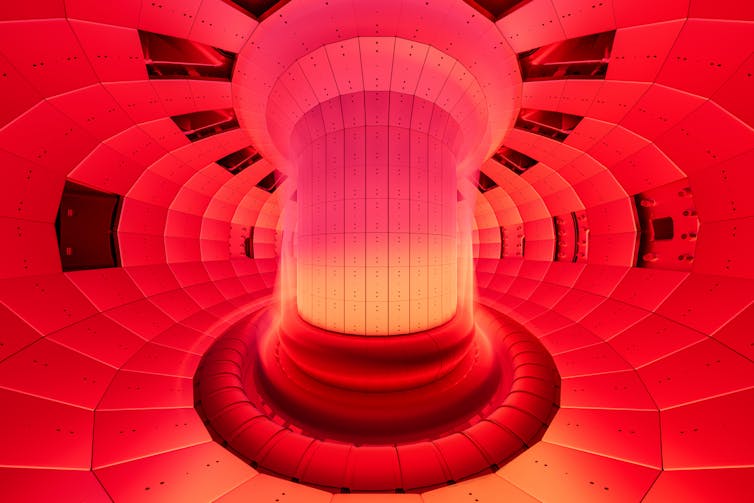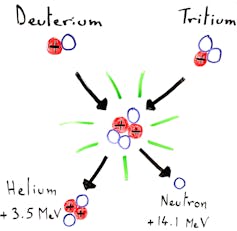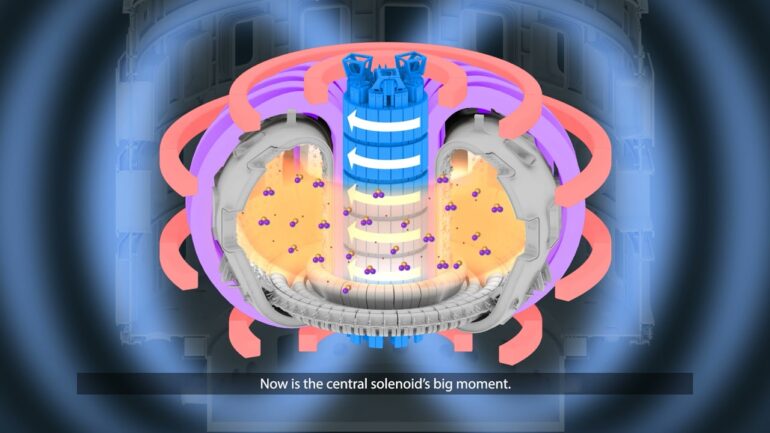Fusion energy has the potential to be an effective clean energy source, as its reactions generate incredibly large amounts of energy. Fusion reactors aim to reproduce on Earth what happens in the core of the Sun, where very light elements merge and release energy in the process. Engineers can harness this energy to heat water and generate electricity through a steam turbine, but the path to fusion isn’t completely straightforward.
Controlled nuclear fusion has several advantages over other power sources for generating electricity. For one, the fusion reaction itself doesn’t produce any carbon dioxide. There is no risk of meltdown, and the reaction doesn’t generate any long-lived radioactive waste.
I’m a nuclear engineer who studies materials that scientists could use in fusion reactors. Fusion takes place at incredibly high temperatures. So to one day make fusion a feasible energy source, reactors will need to be built with materials that can survive the heat and irradiation generated by fusion reactions.

3D rendering of the inside of a fusion reactor chamber.
xia yuan/Moment via Getty Images
Fusion material challenges
Several types of elements can merge during a fusion reaction. The one most scientists prefer is deuterium plus tritium. These two elements have the highest likelihood of fusing at temperatures that a reactor can maintain. This reaction generates a helium atom and a neutron, which carries most of the energy from the reaction.

In the D-T fusion reaction, two hydrogen isotopes, deuterium and tritium, fuse and produce a helium atom and a high-energy neutron.
Sophie Blondel/UT Knoxville
Humans have successfully generated fusion reactions on Earth since 1952 – some even in their garage. But the trick now is to make it worth it. You need to get more energy out of the process than you put in to initiate the reaction.
Fusion reactions happen in a very hot plasma, which is a state of matter similar to gas but made of charged particles. The plasma needs to stay extremely hot – over 100 million degrees Celsius – and condensed for the duration of the reaction.
To keep the plasma hot and condensed and create a reaction that can keep going, you need special materials making up the reactor walls. You also need a cheap and reliable source of fuel.
While deuterium is very common and obtained from water, tritium is very rare. A 1-gigawatt fusion reactor is expected to burn 56 kilograms of tritium annually. But the world has only about 25 kilograms of tritium commercially available.
Researchers need to find alternative sources for tritium before fusion energy can get off the ground. One option is to have each reactor generating its own tritium through a system called the breeding blanket.
The breeding blanket makes up the first layer of the plasma chamber walls and contains lithium that reacts with the neutrons generated in the fusion…



